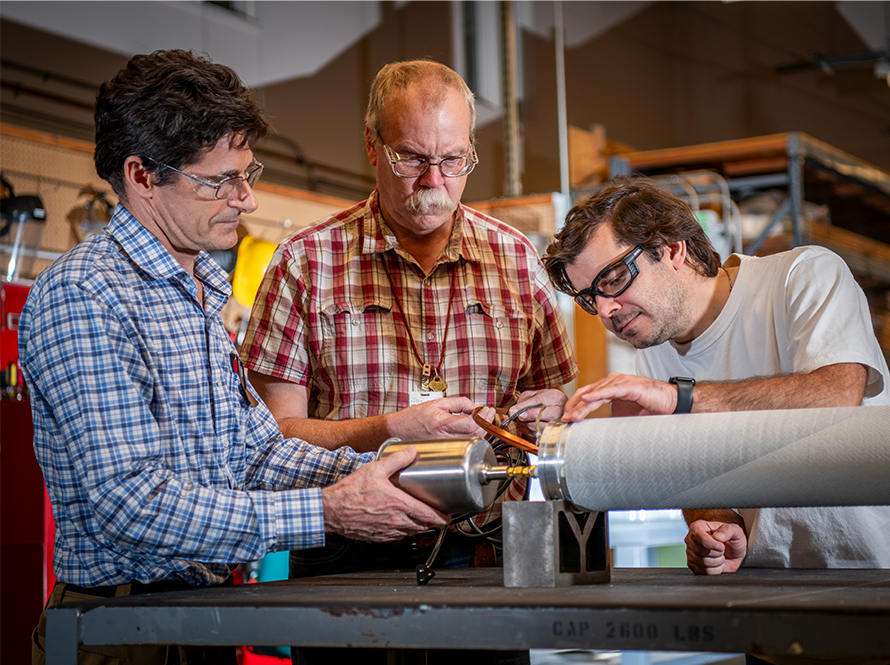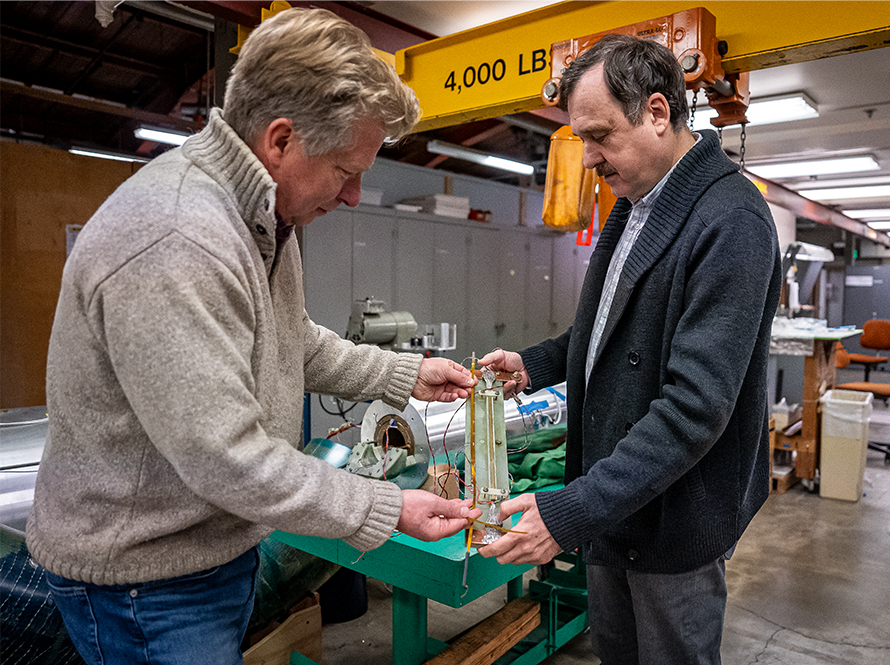
Berkeley Lab Research Scientist Jose Luis Rudeiros Fernandez (right) working on the assembly of a filled-wax canted-cosine theta (CCT) magnet with technicians Jim Swanson (middle) and Chet Spencer (left).
Advanced Modeling leverages state-of-the-art computational tools and methodologies to enhance the design, understanding, and performance of superconducting magnets. We focus on three primary areas: development of design tools, fundamental understanding, and performance limitation studies.
Diagnostics and Instrumentation serve as the basis for all magnet performance information obtained during magnet fabrication and testing, which is central to the USMDP mission. Instrumentation is also essential for identifying quench onset and initiating critical magnet protection processes. As HTS accelerator magnet technology matures, we expect magnet diagnostics and instrumentation to be essential to magnet design, fabrication, and testing.

Berkeley Lab Senior Scientist Soren Prestemon (left) and Staff Scientist Maxim Marchevsky discussing magnet diagnostics for HTS magnets.
Performance Analysis and Enhancement: Data from magnet testing provides an ever-expanding foundation for analyzing performance correlations for a wide range of factors, including design parameters and coil and magnet training history. Small-scale experiments and targeted developments have the potential to gradually enhance our understanding of key phenomena and to aid in building and validating computer models of magnet behavior.
Magnet Materials: To advance accelerator magnet technology, it is essential that we have a thorough understanding of material properties at all stages of the fabrication process and that we select and apply associated magnet materials that optimizes magnet performance. Developing a robust database of material properties and a process for materials selection and usage is a critical element of the USMDP.

